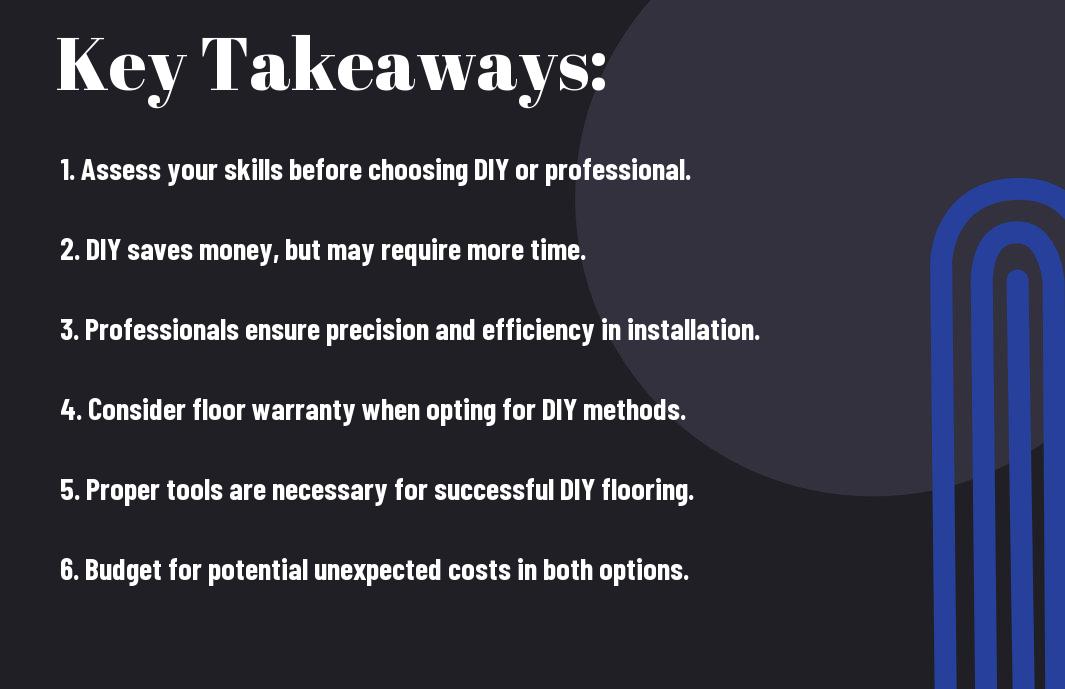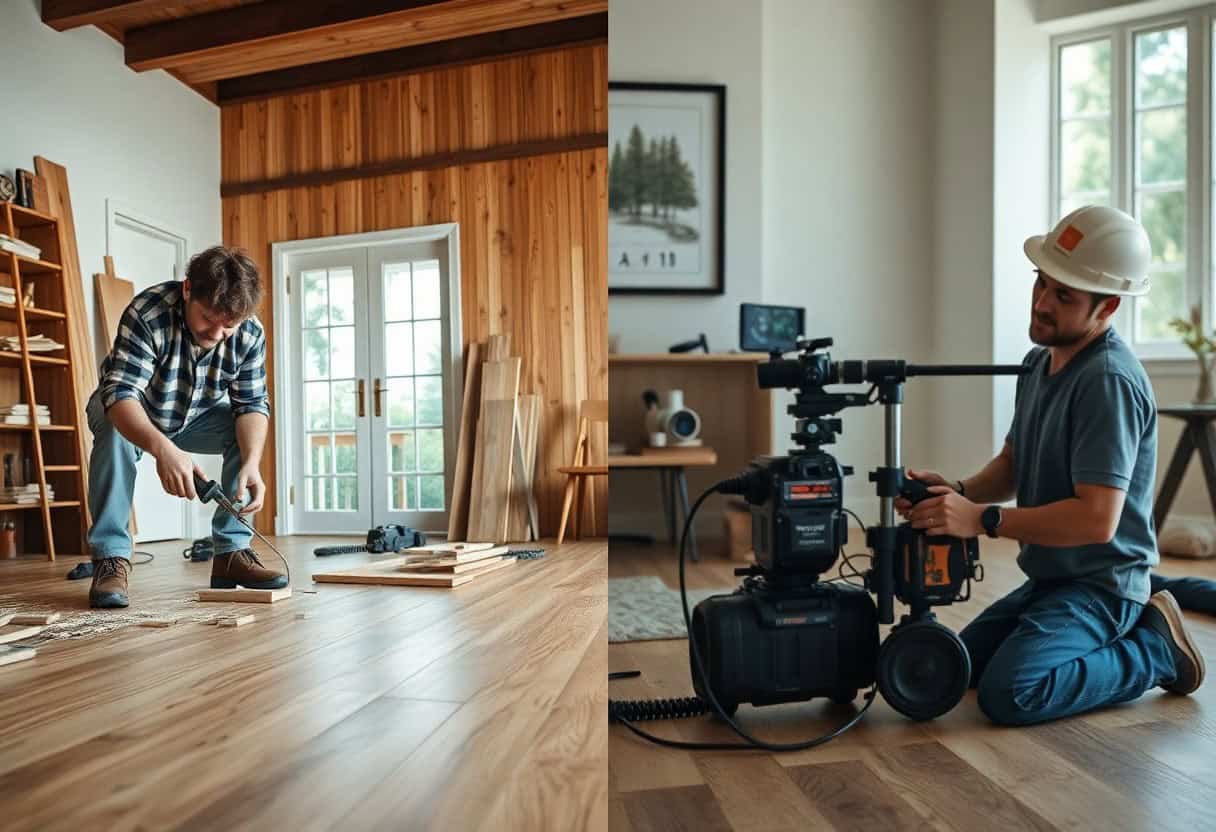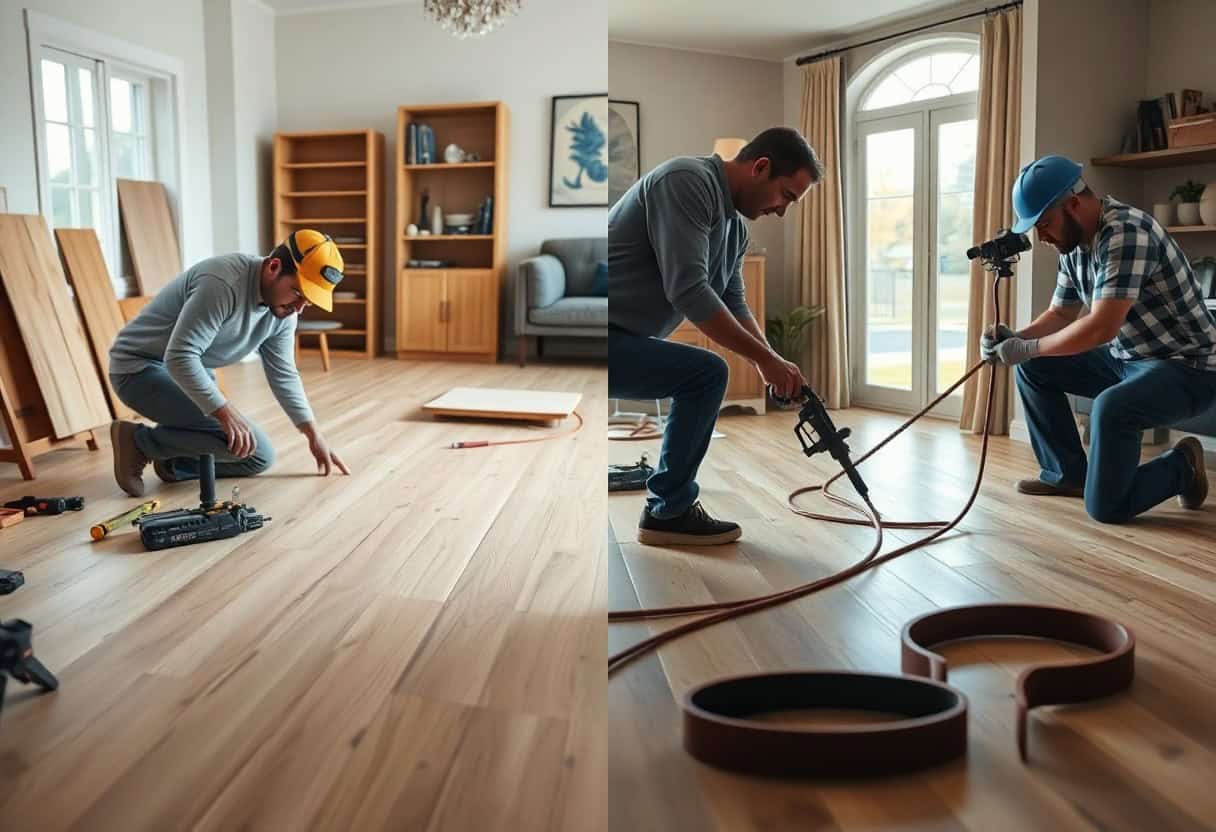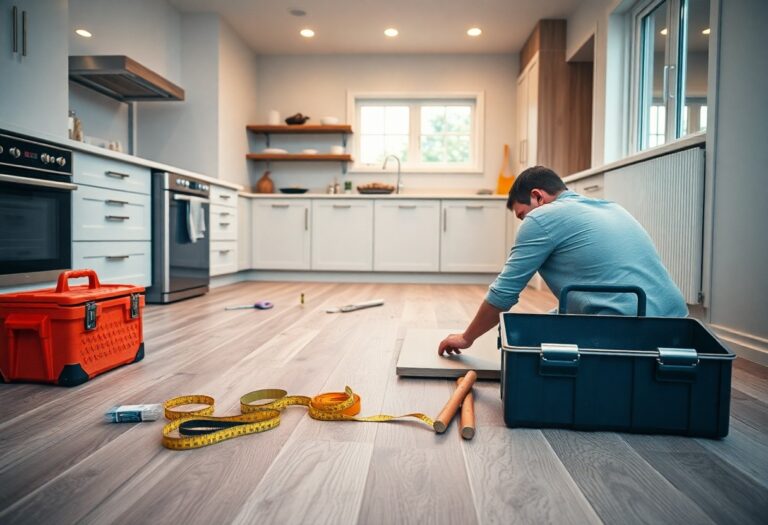There’s a growing trend in home improvement that sees many homeowners weighing the benefits of DIY against hiring professionals, especially when it comes to installing white oak flooring. This guide will help you explore the considerations you should take into account regarding skill level, time commitment, and cost, enabling you to make an informed decision that suits your needs and lifestyle. Whether you’re a seasoned DIY-er or leaning towards professional help, understanding the process is imperative for achieving the best results in your space.


Understanding White Oak Flooring
While considering flooring options, white oak stands out for its durability and timeless beauty. This hardwood species is prized for its versatility, making it a popular choice in both traditional and modern interiors. Whether you’re renovating a cozy cabin or a sleek urban loft, white oak flooring can elevate your space, providing aesthetic appeal and long-lasting performance.
Characteristics of White Oak
Below are some key traits of white oak that make it a top choice for homeowners. It features a tight, straight grain that contributes to its elegant appearance, while its natural light to medium brown color adds warmth to any room. White oak is also known for its water resistance and impressive hardness, ensuring it withstands daily wear and tear.
Benefits of White Oak Flooring
Beside its aesthetic appeal, white oak flooring offers numerous benefits for your home. It’s an exceptionally strong and durable material, meaning it can endure heavy foot traffic without showing signs of wear. Additionally, its natural resistance to moisture makes it suitable for various climates.
White oak flooring also enhances your home’s value. Its distinctive grain and rich color can contribute to a more sophisticated atmosphere, attracting potential buyers should you decide to sell. Furthermore, the eco-friendliness of white oak, when sourced sustainably, aligns with modern trends towards greener living. You can enjoy a beautiful, durable floor while making an environmentally conscious choice, creating a win-win situation for your home and the planet.
DIY Installation Process
Even if you have limited experience, DIY installation of white oak flooring can be a rewarding project. Taking the time to understand the process and gather the right tools will enable you to achieve a professional-looking finish in your home. With basic skills and a bit of patience, you can transform your flooring without hiring outside help.
Tools and Materials Needed
To successfully install white oak flooring, you will need several necessary tools and materials. Gathering everything beforehand ensures a smooth workflow and prevents interruptions during installation.
| Hammer | Vapor Barrier |
| Flooring Nail Gun | Wood Glue |
| Miter Saw | Measuring Tape |
| Pry Bar | Clamps |
| Level | Double-Sided Tape |
Step-by-Step Installation Guide
Before you start laying your white oak flooring, it’s necessary to follow a systematic approach for the best results. This step-by-step guide will break down the installation into manageable parts, making the entire process less daunting.
| 1. Prepare the Subfloor | Ensure it’s clean, dry, and level. |
| 2. Acclimate the Flooring | Let the planks adjust to room temperature. |
| 3. Lay Vapor Barrier | Install it on the subfloor to protect from moisture. |
| 4. Measure and Cut Planks | Fit the planks to the room dimensions. |
| 5. Install the First Row | Secure with nails or glue as needed. |
| 6. Continue with Subsequent Rows | Stagger joints for stability. |
| 7. Install Baseboards | Finish the look by covering expansion gaps. |
Guide your own installation process by following these steps closely. Each phase is designed to ensure you achieve a sturdy, aesthetically pleasing result. Pay attention to details such as ensuring the subfloor is completely smooth and level, and always stagger your joints for added durability. Taking the time to perform each step thoroughly will enhance the long-term performance of your flooring.
Hiring a Professional Installer
After deciding that professional installation is the right path for your white oak flooring, it’s crucial to find a qualified installer who can bring your vision to life. A skilled professional will not only ensure that your floors are laid correctly but will also provide advice on maintenance and care, helping you maximize the longevity of your investment. Take the time to research and ask for referrals to guarantees a seamless installation process and a stunning finished product.
What to Look for in a Professional
About selecting a professional installer, focus on their experience, credentials, and customer reviews. A reputable installer will have a portfolio of completed projects and positive feedback from previous clients. Additionally, ensure they are licensed and insured to protect yourself from potential disputes or damages during the installation process. An installer who is knowledgeable about white oak flooring can also offer insights that may benefit your project.
Cost Considerations
To evaluate the cost of hiring a professional installer, you should consider the overall budget for your flooring project. The pricing can fluctuate depending on the complexity of the installation, the installer’s experience, and your geographical location. By obtaining multiple quotes and assessing what various professionals offer, you can better align your budget with your expectations.
For instance, the cost may include labor, materials, and any additional services such as old flooring removal or subfloor repairs. Keep in mind that while the initial expense may be higher for professional installation compared to DIY methods, the long-term benefits, including quality and durability, can ultimately save you money and stress in the future. Investing in a qualified professional can offer peace of mind that your flooring will withstand the test of time.
Comparing Time and Effort
Now, when considering white oak flooring installation, you must evaluate both DIY efforts and hiring professionals. Each option has its unique demands, and it’s vital to assess how much time and energy you’re willing to commit.
| DIY Installation | Professional Installation |
|---|---|
| Requires significant time for preparation and installation. | Generally faster with an established timeline. |
| Involves planning, measuring, and executing on your own schedule. | Team can handle logistics and scheduling for you. |
| Potentially overlaps with other home projects. | Allows you to focus on other priorities. |
DIY Time Commitment
With a DIY installation, you need to allocate considerable time for preparation, which includes measuring, purchasing materials, and laying down the flooring. Depending on your experience, this could take several days or even weeks, especially if you encounter unforeseen challenges along the way. You should also factor in the time for acclimating the wood and applying any necessary finishes.
Professional Timeline
Against the DIY approach, hiring a professional can streamline the process significantly. Their expertise allows for a quicker installation, typically completed within a few days. This faster turnaround can minimize disruption in your home and provide peace of mind, knowing the job is handled by experts.
Understanding the professional timeline involves recognizing the efficiency of seasoned installers who have the necessary tools and experience at their disposal. They can often complete the project swiftly while ensuring quality. From initial consultation through to final inspection, a professional service usually adheres to predetermined schedules, giving you a more predictable timeframe for project completion.
Common Challenges and Solutions
Not all flooring installations go smoothly, as various challenges can arise during white oak flooring installation. You’ll likely encounter issues such as uneven subfloors, moisture levels, and acclimation of wood. By being aware of these obstacles upfront, you can take proactive steps to address them, like using shims for leveling or investing in a moisture meter to ensure your wood is properly acclimated.
DIY Pitfalls
Behind many DIY flooring projects are hidden pitfalls that can derail your installation. Inadequate planning, improper tools, and lack of experience can lead to costly mistakes. For example, skipping the acclimation process can result in unsightly gaps or buckling after installation. Understanding these common issues will help you plan better and avoid setbacks.
How Professionals Overcome Challenges
Common challenges during installation are well-known to industry professionals, who have developed strategies to navigate them effectively. They can recognize and rectify uneven surfaces quickly, ensuring a flawless finish.
With years of experience, professionals utilize specialized tools and techniques to ensure optimal results when faced with installation challenges. Whether it’s employing moisture mitigation methods or adjusting for the unique properties of white oak, their expertise allows them to tackle problems efficiently. Additionally, they have access to a broader range of resources and materials to ensure complications are managed seamlessly, giving you peace of mind throughout the process.
Long-Term Maintenance and Care
Your white oak flooring can last for generations with the right long-term maintenance and care. Regular cleaning and timely repairs are vital to preserving its beauty and durability. You should establish a routine to ensure that your floors remain in excellent condition, allowing you to enjoy their natural elegance for years to come.
DIY Maintenance Tips
Among the ways you can maintain your white oak flooring, implementing a few simple DIY practices can make a significant difference:
- Sweep or vacuum regularly to remove dust and debris.
- Use a damp mop with a pH-neutral cleaner for deeper cleaning.
- Avoid excessive water exposure to prevent warping.
- Place rugs at entryways to minimize dirt and grime.
Recognizing the impact of your efforts will help you enjoy your floors for many years.
Professional Maintenance Services
Any flooring system benefits from professional maintenance services that can extend its lifespan and preserve its aesthetic appeal. Hiring experts ensures your white oak floors receive the specialized care they deserve.
In fact, professional services often include sanding, refinishing, and applying protective finishes that not only enhance the natural beauty of your wood but also protect against wear and damage. These experts have the right tools and experience to identify potential issues early, saving you time and money in the long run. Regularly scheduling professional inspections and maintenance can help you maintain the value of your investment while keeping your spaces looking their best.
To wrap up
Presently, understanding the differences between DIY and professional installation for white oak flooring can significantly impact your project’s outcome. While commenceing on a DIY endeavor may allow you to save money, ensure you possess the necessary skills and tools to achieve a quality finish. On the other hand, hiring professionals can provide expertise and efficiency, but it comes at a higher cost. Weigh your options carefully, considering your budget, time constraints, and desired results to make an informed decision that best suits your needs.





